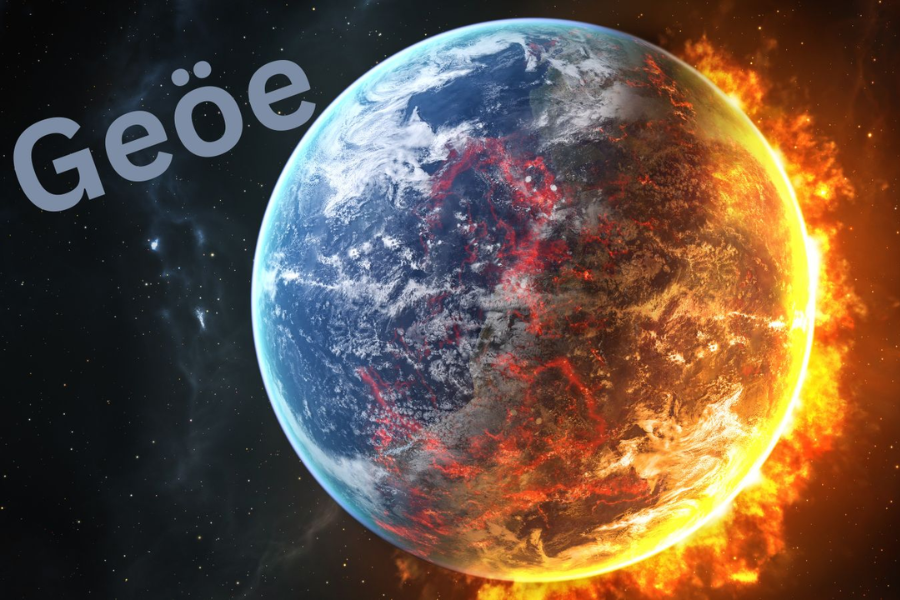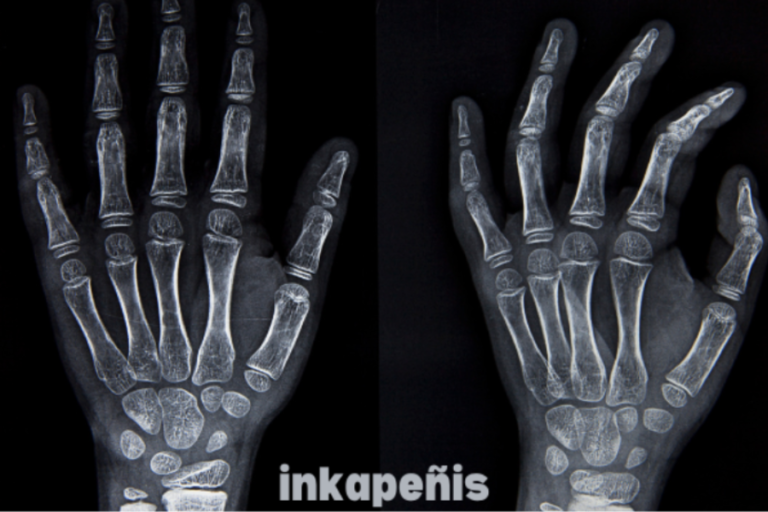Geöe: The Future of Geospatial Innovation and Interactive Solutions
Introduction
Geöe is an innovative breakthrough in geospatial technology, seamlessly blending the virtual and physical realms to offer transformative solutions across various sectors. By integrating advanced geospatial technologies, Geöe enhances decision-making and operational efficiency in areas such as urban planning and environmental monitoring. This article delves into the origins, operational mechanisms, and benefits of Geöe, demonstrating its significant impact on contemporary technology and exploring its future potential. Discover how Geöe revolutionizes our interaction with spatial data and space itself.
How Geöe Works
Geöe operates through a sophisticated fusion of geospatial technologies. Central to its functionality is the combination of diverse data sources to create a dynamic and interactive representation of the physical world.
Data Collection
Geöe collects information from a multitude of sources, including satellites, sensors, and user inputs. This data encompasses a range of geographical, environmental, and location-based information, providing a comprehensive view of the area under analysis.
Data Processing
Once collected, the data undergoes processing and analysis through advanced algorithms. This stage converts raw data into actionable insights by identifying key patterns and trends, which are essential for informed decision-making.
Visualization
Geöe employs robust visualization tools to present data in a user-friendly format. This includes maps, graphs, and 3D models, which enable real-time interaction with the data. Such visualizations simplify complex geospatial information, making it easier to understand and utilize.
Interaction with Virtual and Physical Worlds
A defining feature of Geöe is its ability to bridge the virtual and physical worlds. By integrating augmented reality (AR) and virtual reality (VR) technologies, Geöe allows users to superimpose digital information onto the physical environment, enhancing spatial awareness and planning capabilities.
Decentralized Framework
Geöe operates on a decentralized framework, which distributes data across a network rather than storing it centrally. This decentralization enhances data security, reduces the risk of single points of failure, and provides scalability and flexibility for a broad range of applications.
Key Features of Geöe
Geöe is distinguished by a suite of advanced features that elevate its functionality and applicability across diverse fields. These features collectively make Geöe a powerful tool for geospatial analysis and strategic decision-making.
Enhanced Decision-Making
Geöe equips users with tools that deliver precise and insightful data. By analyzing extensive geospatial datasets, Geöe supports well-informed decisions, especially critical in urban planning where accurate data is vital for effective development.
Improved Efficiency
The real-time processing and visualization capabilities of Geöe significantly enhance efficiency. Users can swiftly identify patterns and trends, reducing data analysis time. This is particularly beneficial in logistics, where prompt decision-making can lead to cost savings and improved service delivery.
Better Risk Management
Geöe’s advanced analytics enable the identification of potential risks and vulnerabilities. In disaster management, for instance, Geöe can forecast areas prone to flooding or other natural calamities, facilitating proactive measures to mitigate impact. This feature is crucial for minimizing damage and safeguarding safety.
Comprehensive Visualization
Geöe’s robust visualization capabilities allow complex data to be translated into intuitive visual formats such as 3D maps and interactive models. This ease of understanding and interaction aids in better insights and planning.
Real-Time Data Integration
Geöe supports the integration of real-time data from multiple sources, a valuable feature for applications like traffic management. Live data helps in optimizing routes and reducing congestion, ensuring that users operate with the most current information.
Scalability and Flexibility
Designed to accommodate large-scale data sets, Geöe is both scalable and adaptable. Whether for small local projects or extensive regional analyses, Geöe manages varying data complexities and volumes effectively.
User-Friendly Interface
Despite its sophisticated capabilities, Geöe features an accessible interface that facilitates use by individuals with varying levels of technical expertise. This user-friendly approach democratizes access to data tools, broadening their impact and reach.
Benefits of Geöe
Geöe offers a range of benefits that amplify its value and effectiveness across different applications. Its ability to efficiently process and analyze geospatial data makes it a transformative asset for numerous industries.
Increased Efficiency
Geöe streamlines data collection, analysis, and visualization processes, leading to considerable time savings. In urban planning, for instance, it enables quick assessment of land use and infrastructure needs, accelerating decision-making and project execution.
Enhanced User Experience
With its intuitive interface and advanced visualization tools, Geöe is accessible to a diverse range of users, including city planners, environmental scientists, and logistics managers. This accessibility improves user experience and leads to more effective outcomes.
New Possibilities for Interaction
The integration of AR and VR technologies with Geöe offers innovative ways to engage with geospatial data. Architects, for example, can use AR to overlay digital models onto physical spaces, enhancing design and planning processes. This interactive approach unlocks new possibilities for data utilization in real-world scenarios.
Improved Decision-Making
By providing accurate and current data, Geöe enhances decision-making quality. In disaster management, timely and precise information is essential for effective responses. Geöe’s predictive and visual capabilities enable authorities to take proactive steps, reducing disaster impact.
Better Risk Management
Geöe’s advanced analytics aid in identifying and understanding risks and vulnerabilities. This is particularly beneficial in insurance and finance sectors where risk assessment is critical. Geöe helps analyze spatial data to predict risk factors and implement preventative strategies.
Scalability
Geöe is designed to manage varying levels of data complexity and volume, making it suitable for both small-scale and large-scale projects. Its flexible architecture adapts to diverse user needs, ensuring continued effectiveness regardless of project scope.
Environmental Benefits
Geöe supports environmental monitoring and conservation by providing detailed insights into natural resources and ecological conditions. It tracks deforestation, monitors wildlife habitats, and assesses climate change impacts, enabling more effective environmental management.
Economic Benefits
By improving efficiency and decision-making, Geöe contributes to economic gains. Businesses can optimize operations, reduce costs, and enhance productivity. For instance, logistics companies can use Geöe for route optimization, leading to fuel and time savings. These improvements translate into cost reductions and increased profitability.
Applications of Geöe
Geöe’s versatility allows it to be applied across a variety of industries, each benefiting from its capacity to process and visualize geospatial data. Here are some primary applications:
Urban Planning
Urban planners use Geöe to analyze land use, infrastructure, and population density. It supports efficient city layouts, public transportation optimization, and resource management. Geöe’s visualizations of growth patterns and development needs aid in sustainable urban development.
Environmental Monitoring
Geöe is crucial for tracking environmental changes, including deforestation, air and water quality, and wildlife habitats. Conservationists and researchers rely on Geöe to gather and analyze data for protecting natural resources and biodiversity.
Retail Optimization
Retailers utilize Geöe to understand consumer behavior and optimize store locations. By analyzing demographic data and shopping patterns, businesses can identify prime locations for new stores and tailor marketing strategies, leading to improved customer targeting and sales.
Transportation and Logistics
Geöe is instrumental in route optimization, fleet management, and real-time traffic monitoring. Logistics companies use Geöe for planning efficient delivery routes, reducing fuel consumption, and improving service delivery. Public transportation systems also benefit from better route planning and service management.
Infrastructure Development and Management
Geöe aids in infrastructure project planning and maintenance, mapping roads, bridges, and utilities for efficient and sustainable development. Detailed visualizations support effective project planning and execution.
Disaster Management and Risk Assessment
Authorities use Geöe to predict and respond to natural disasters. It identifies vulnerable areas, plans evacuation routes, and coordinates emergency responses. Accurate geospatial data enhances preparation and response, potentially saving lives and reducing damage.
Agriculture
Farmers and agribusinesses leverage Geöe for precision agriculture. It helps monitor crop health, manage irrigation, and optimize the use of fertilizers and pesticides, leading to increased yields and sustainable farming practices.
Healthcare
Geöe supports public health by tracking disease outbreaks and managing healthcare resources. It assists in identifying areas needing medical services, planning healthcare facilities, and monitoring infectious diseases for effective public health planning and intervention.
Real Estate
Real estate professionals use Geöe to assess property values, analyze market trends, and choose optimal development locations. It provides insights into property boundaries, zoning regulations, and environmental factors, aiding in investment decisions.
Energy Sector
Geöe facilitates the exploration and management of energy resources. It supports renewable energy projects, such as wind and solar farms, and manages the distribution of utilities. This ensures resource efficiency and supports the transition to sustainable energy solutions.
Innovative Spatial Solutions
Geöe integrates several advanced technologies that offer innovative spatial solutions, enhancing data collection, processing, and visualization capabilities. These solutions drive more informed decision-making and operational efficiency.
Geographic Information Systems (GIS)
GIS integrates various data types, including maps, satellite imagery, and statistical information, to create comprehensive spatial databases. This integration supports detailed geographic analysis and visualization.
Mapping and Analysis
GIS tools enable the creation of detailed maps and spatial analysis, revealing patterns, trends, and relationships within the data. This is invaluable for urban planning, environmental management, and logistics.
Custom Applications
GIS can be customized to address specific needs, offering industry-specific solutions. For example, utilities can use GIS for infrastructure management and service monitoring.
Global Positioning System (GPS) and Location-Based Services (LBS)
Accurate Positioning
GPS technology delivers precise location information for navigation, mapping, and location-based services, crucial for applications like emergency response and transportation management.
Real-Time Tracking
GPS enables real-time tracking of assets, vehicles, and personnel, enhancing logistics, fleet management, and operational efficiency.
Enhanced Services
LBS leverages location data to offer personalized services, such as targeted advertising and location-based recommendations, improving user experience and engagement.
Augmented Reality (AR) and Virtual Reality (VR)
Interactive Visualization
AR and VR technologies provide interactive visualization of geospatial data, allowing users to engage with digital models overlaid onto physical environments. This enhances spatial awareness and planning capabilities.
Immersive Experiences
AR and VR offer immersive experiences for various applications, including training, education, and virtual tours, enabling users to explore and interact with data in innovative ways.
Enhanced Design and Planning
Architects and designers use AR and VR to visualize and modify designs in real-time, facilitating better planning and decision-making for construction and development projects.
Big Data Analytics
Comprehensive Data Analysis
Big data analytics processes vast amounts of geospatial data to uncover insights and trends. It supports predictive analytics, helping to forecast future conditions and trends based on historical data.
Real-Time Processing
Big data analytics provides real-time processing of streaming data, enabling timely responses and decisions. This is valuable for applications like traffic management and disaster response.
Advanced Modeling
Big data analytics enables the creation of complex models that simulate various scenarios and outcomes. These models aid in strategic planning and risk management.
Artificial Intelligence (AI) and Machine Learning (ML)
Pattern Recognition
AI and ML algorithms analyze geospatial data to identify patterns and anomalies, improving accuracy in predictions and decision-making. For example, AI can detect changes in land use or identify trends in environmental data.
Automated Analysis
AI and ML automate data analysis processes, reducing the time and effort required for manual analysis. This enhances efficiency and allows for more complex and detailed analyses.
Enhanced Predictions
AI and ML improve predictive capabilities by learning from historical data and adjusting models based on new information. This leads to more accurate forecasts and better decision support.
Future Potential of Geöe
The future of Geöe holds exciting possibilities as technology continues to evolve and new applications emerge. Here are some potential developments and opportunities:
Continued Technological Advancements
Geöe will benefit from ongoing advancements in geospatial technology, including improvements in data collection methods, processing algorithms, and visualization tools. These advancements will enhance the capabilities and applications of Geöe, making it an even more powerful tool for spatial analysis.
Expanded Applications
Geöe’s applications are likely to expand into new industries and fields. For instance, advancements in smart cities and IoT could lead to innovative uses of Geöe for urban management, infrastructure monitoring, and environmental sustainability.
Integration with Emerging Technologies
The integration of Geöe with emerging technologies such as blockchain and advanced AI could revolutionize its functionality. Blockchain could enhance data security and transparency, while advanced AI could enable more sophisticated analysis and automation.
Increased Adoption and Accessibility
As Geöe technology becomes more accessible and affordable, its adoption is expected to increase across various sectors. This broader adoption will drive innovation and lead to new applications and use cases.
Enhanced User Experience
Future developments will focus on improving user experience, making Geöe more intuitive and user-friendly. Enhanced interfaces and interactive tools will enable users to engage with data more effectively and derive greater insights.
Collaboration and Partnerships
Collaboration between technology providers, researchers, and industry stakeholders will drive the development of new Geöe applications and solutions. Partnerships will facilitate knowledge sharing, innovation, and the creation of integrated geospatial solutions.
Conclusion
Geöe represents a significant advancement in geospatial technology, offering transformative solutions across diverse sectors. By integrating advanced data collection, processing, and visualization technologies, Geöe enhances decision-making, operational efficiency, and user experience. Its applications span urban planning, environmental monitoring, logistics, and beyond, demonstrating its versatility and impact. As technology continues to evolve, Geöe’s potential to revolutionize spatial analysis and interaction will expand, driving innovation and progress in the field.
FAQs
What is Geöe?
Geöe is a cutting-edge geospatial technology that integrates various data sources to provide advanced data collection, processing, and visualization solutions. It enhances decision-making and operational efficiency across multiple sectors.
How does Geöe work?
Geöe collects data from satellites, sensors, and user inputs, processes it using advanced algorithms, and visualizes it through interactive tools. It integrates augmented and virtual reality technologies to bridge the virtual and physical worlds.
What are the key features of Geöe?
Geöe offers enhanced decision-making, improved efficiency, better risk management, comprehensive visualization, real-time data integration, scalability, and a user-friendly interface.
What are the benefits of using Geöe?
Geöe increases efficiency, enhances user experience, opens new possibilities for interaction, improves decision-making, and supports better risk management. It also provides environmental and economic benefits.
What industries can benefit from Geöe?
Geöe benefits various industries, including urban planning, environmental monitoring, retail optimization, transportation and logistics, infrastructure development, disaster management, agriculture, healthcare, real estate, and energy.
What are some innovative spatial solutions provided by Geöe?
Geöe integrates GIS, GPS and LBS, AR and VR, big data analytics, and AI and ML to offer innovative spatial solutions, including interactive visualization, accurate positioning, comprehensive data analysis, and automated analysis.
What does the future hold for Geöe?
The future of Geöe includes continued technological advancements, expanded applications, integration with emerging technologies, increased adoption, enhanced user experience, and collaboration with industry stakeholders.






